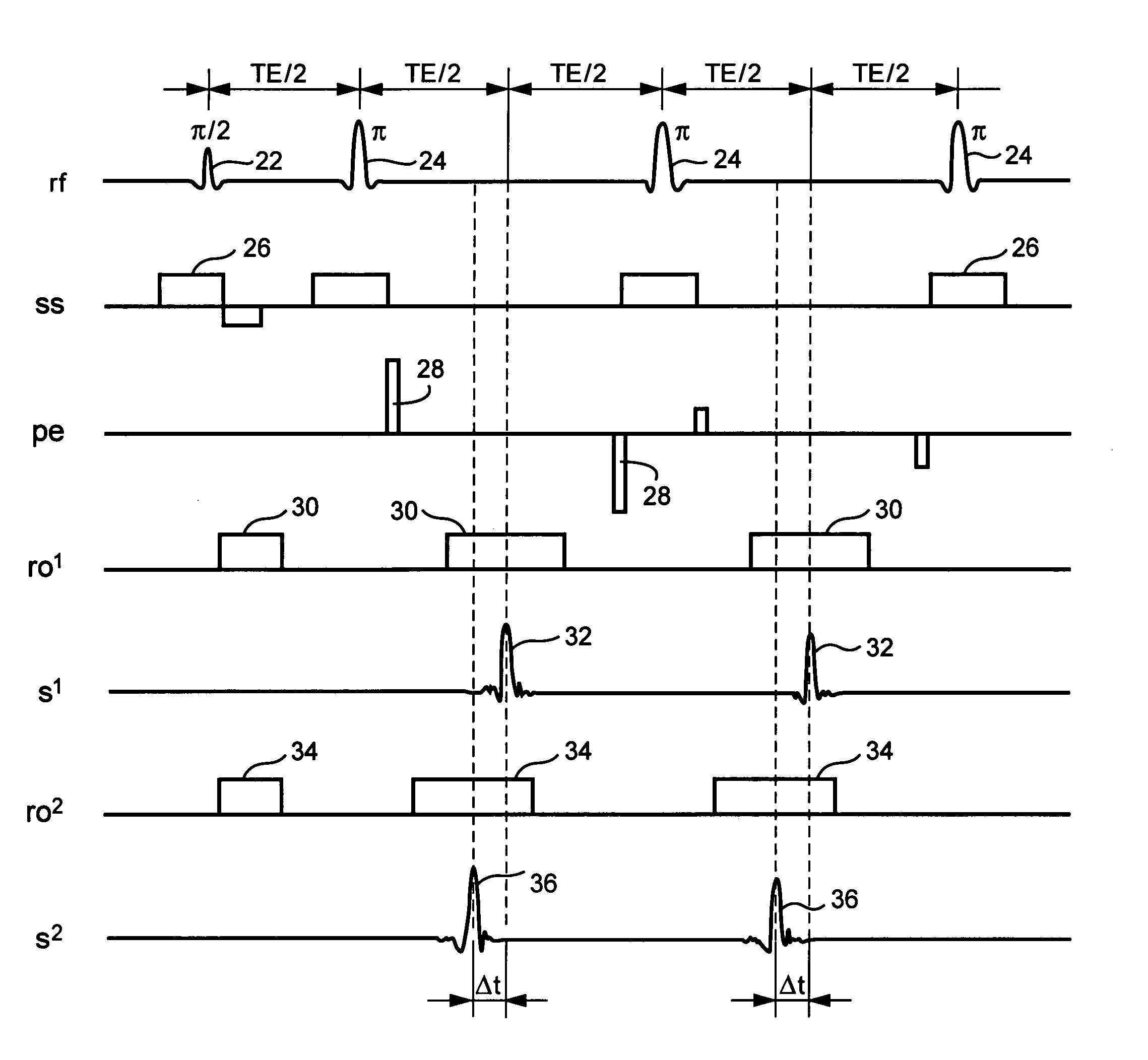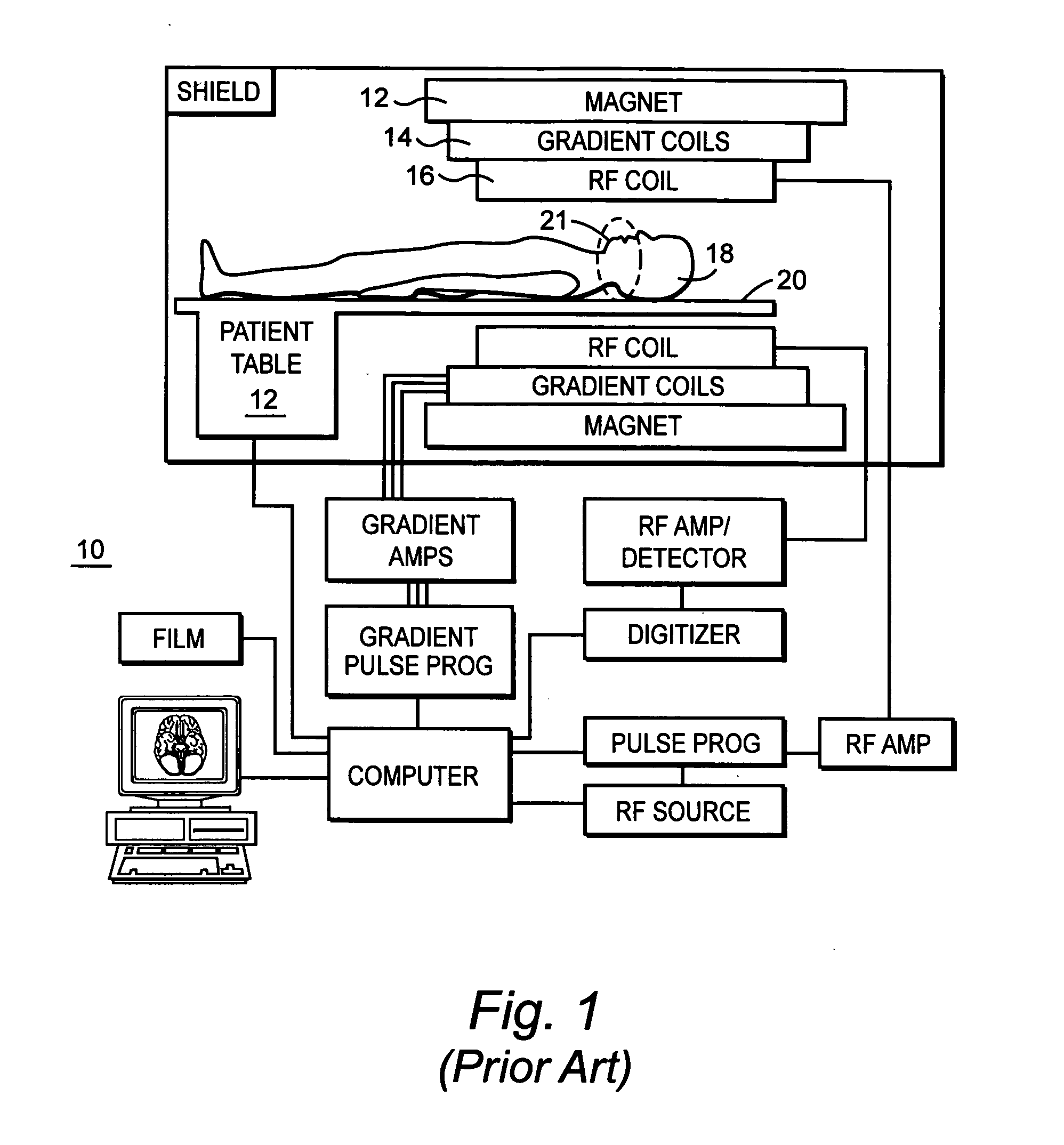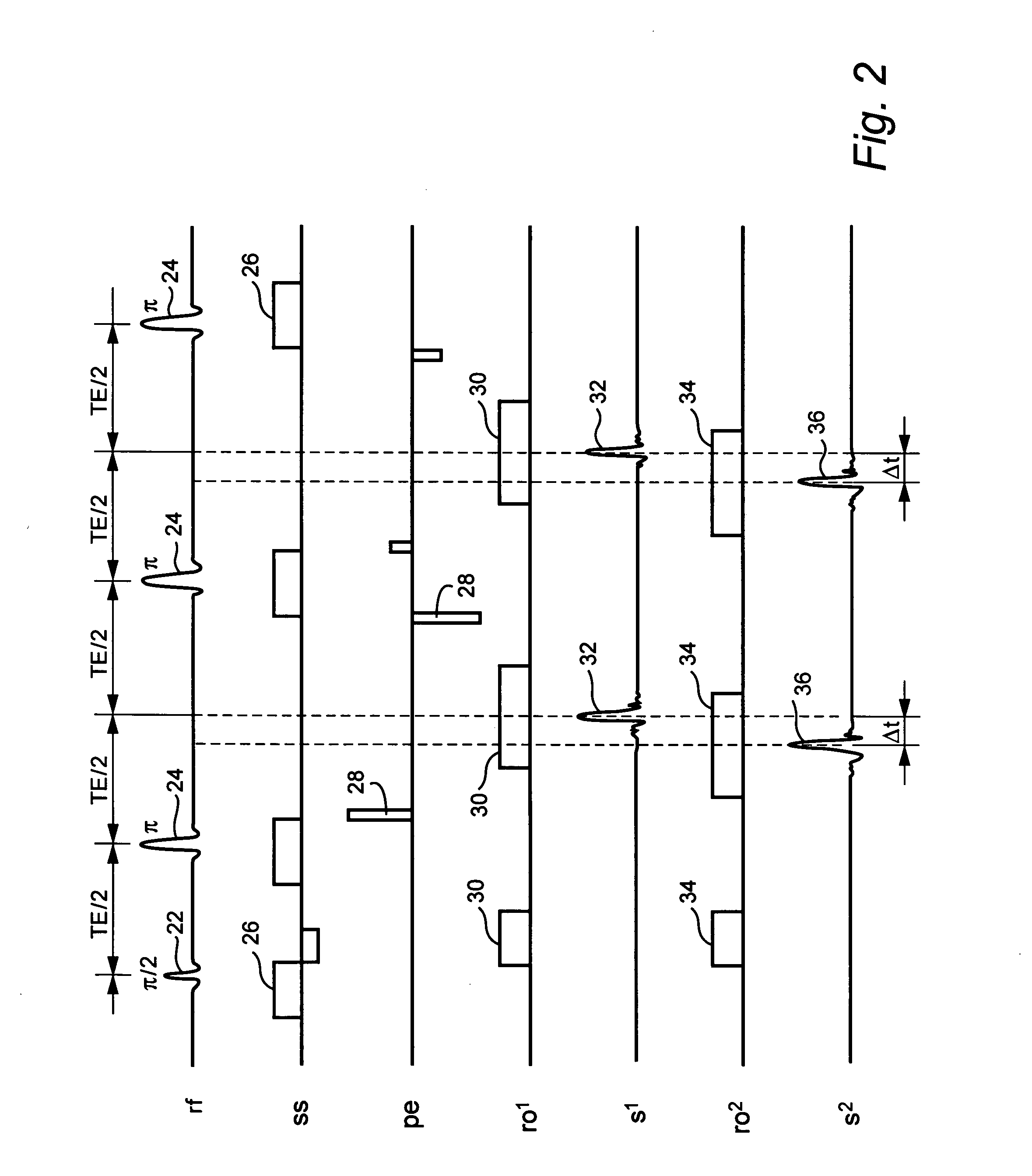Water-fat separation for fast spin echo imaging in an inhomogeneous field with progressive encoding
a spin echo and water-fat technology, applied in the field of magnetic resonance imaging, can solve the problems of inability to achieve high levels of main field homogeneity, inability to discriminate between water and lipid signals, and inability to achieve long rf pulse lengths,
- Summary
- Abstract
- Description
- Claims
- Application Information
AI Technical Summary
Benefits of technology
Problems solved by technology
Method used
Image
Examples
Embodiment Construction
[0029]FIG. 1 shows a typical MR imaging system 10 including a magnet 12 to impose a static magnetic field (B0), gradient coils 14 for imposing spatially distributed gradient magnetic fields (Gx, Gy, and Gz) having gradients along three respective orthogonal coordinates, and RF coils 16 to transmit and receive RF signals to and from the selected nuclei of the body being imaged. The orthogonal gradients are applied to select a slice or other region of the body being imaged, to phase encode nuclei in the selected slice and to readout RF signals from the phase encoded nuclei. The patient 18 lies on a patient table 20 such that a portion of the patient to be imaged is in an “imaging volume”21 between the magnet and coils, which defines a field of view (FOV) of the MRI system.
[0030]FIG. 2 shows a standard 2D fast spin echo (FSE) sequence (ro1, s1) and a shifted fast spin echo sequence (ro2, s2). Note that ro2 and s2 are shifted. As is conventional, a 90° (π / 2) initial phase RF pulse 22 i...
PUM
 Login to View More
Login to View More Abstract
Description
Claims
Application Information
 Login to View More
Login to View More - R&D
- Intellectual Property
- Life Sciences
- Materials
- Tech Scout
- Unparalleled Data Quality
- Higher Quality Content
- 60% Fewer Hallucinations
Browse by: Latest US Patents, China's latest patents, Technical Efficacy Thesaurus, Application Domain, Technology Topic, Popular Technical Reports.
© 2025 PatSnap. All rights reserved.Legal|Privacy policy|Modern Slavery Act Transparency Statement|Sitemap|About US| Contact US: help@patsnap.com



